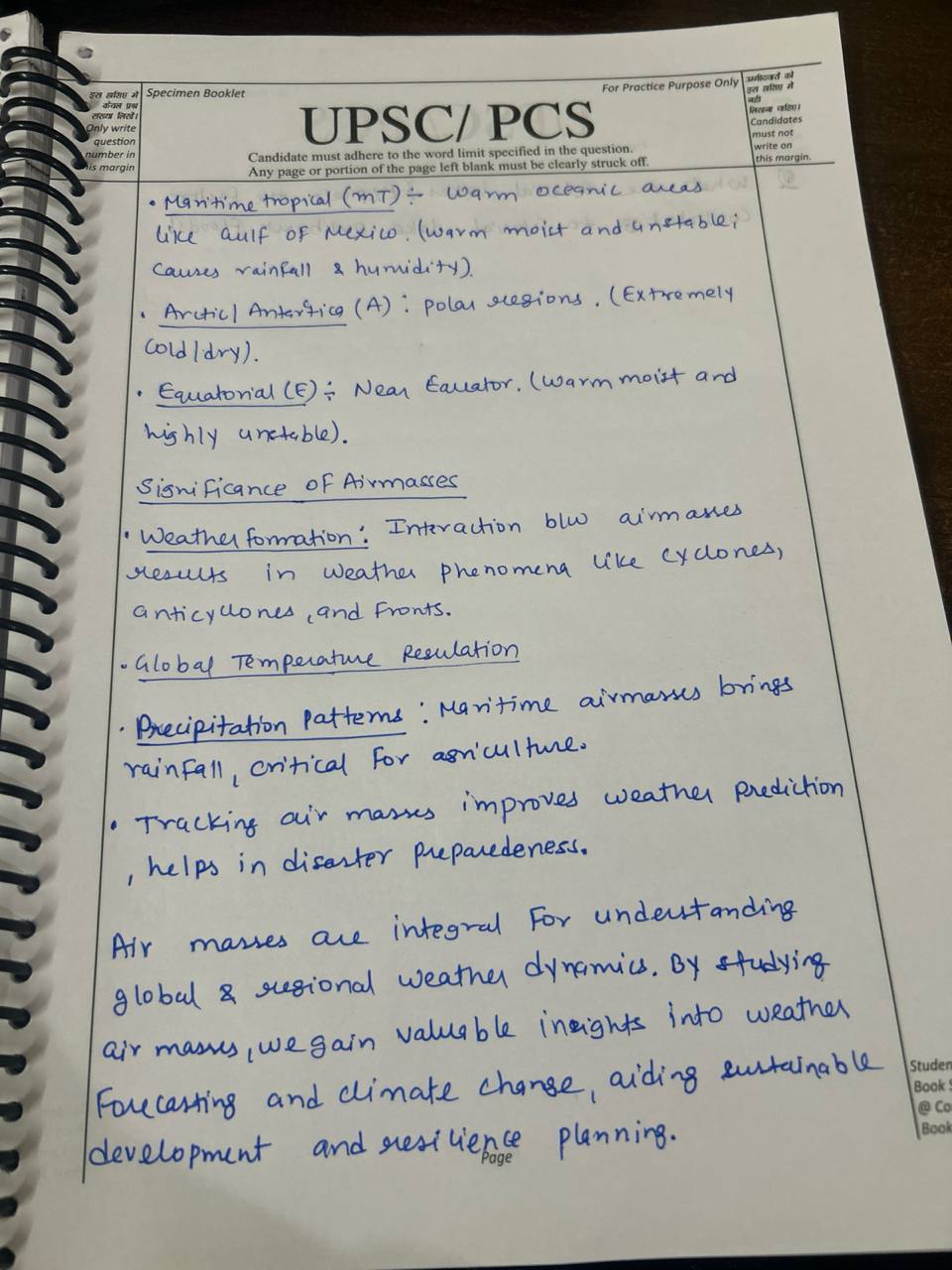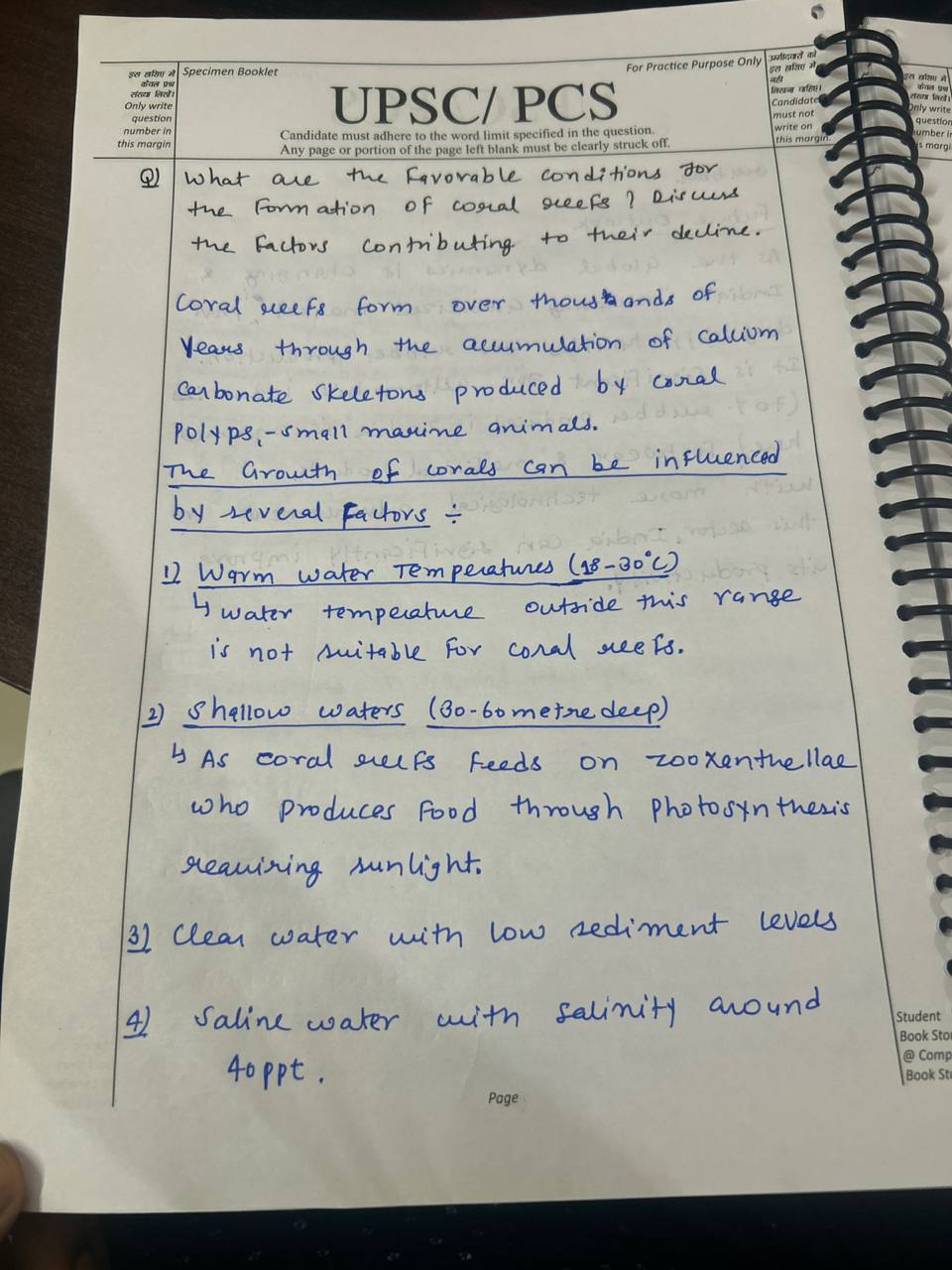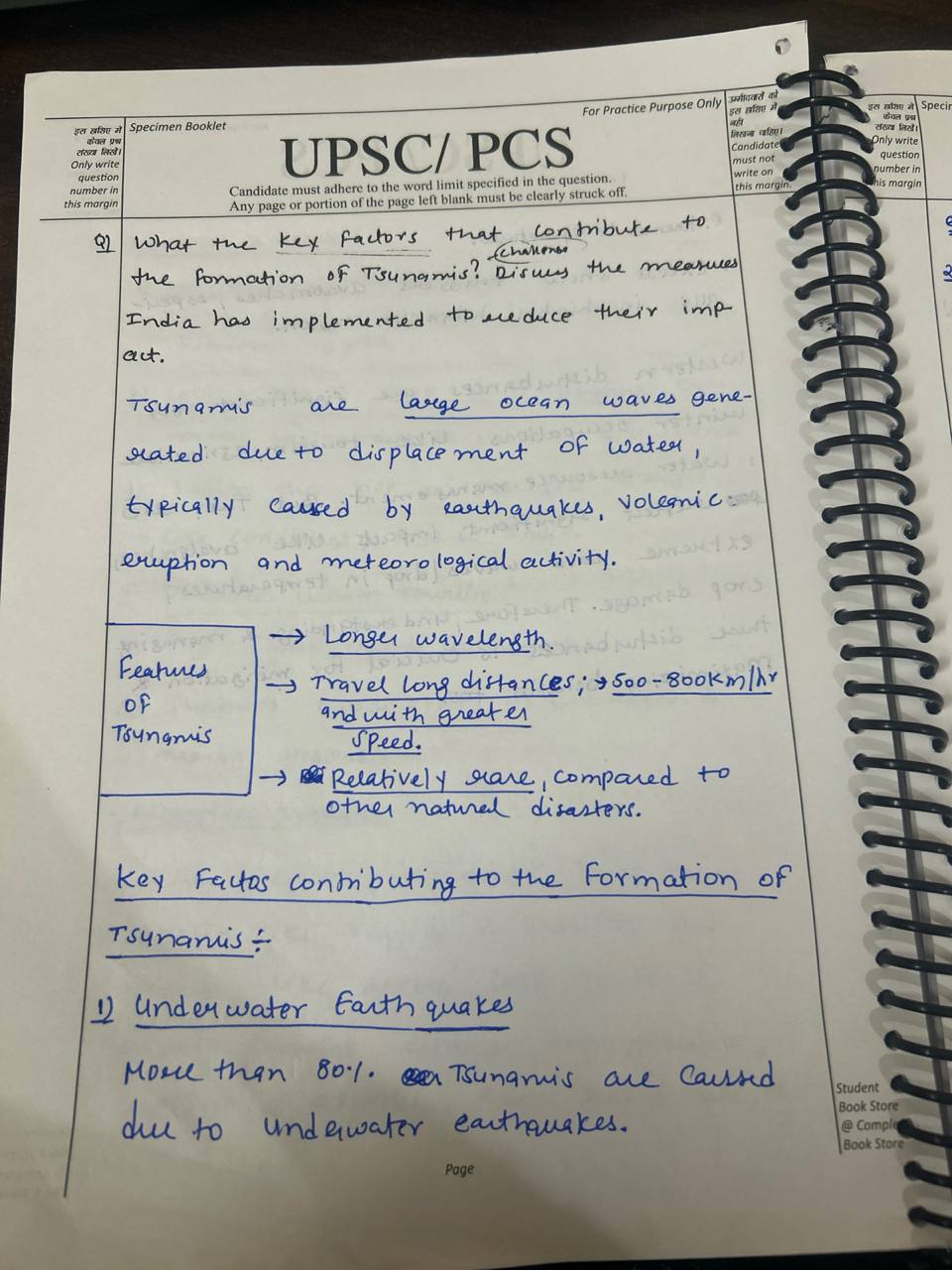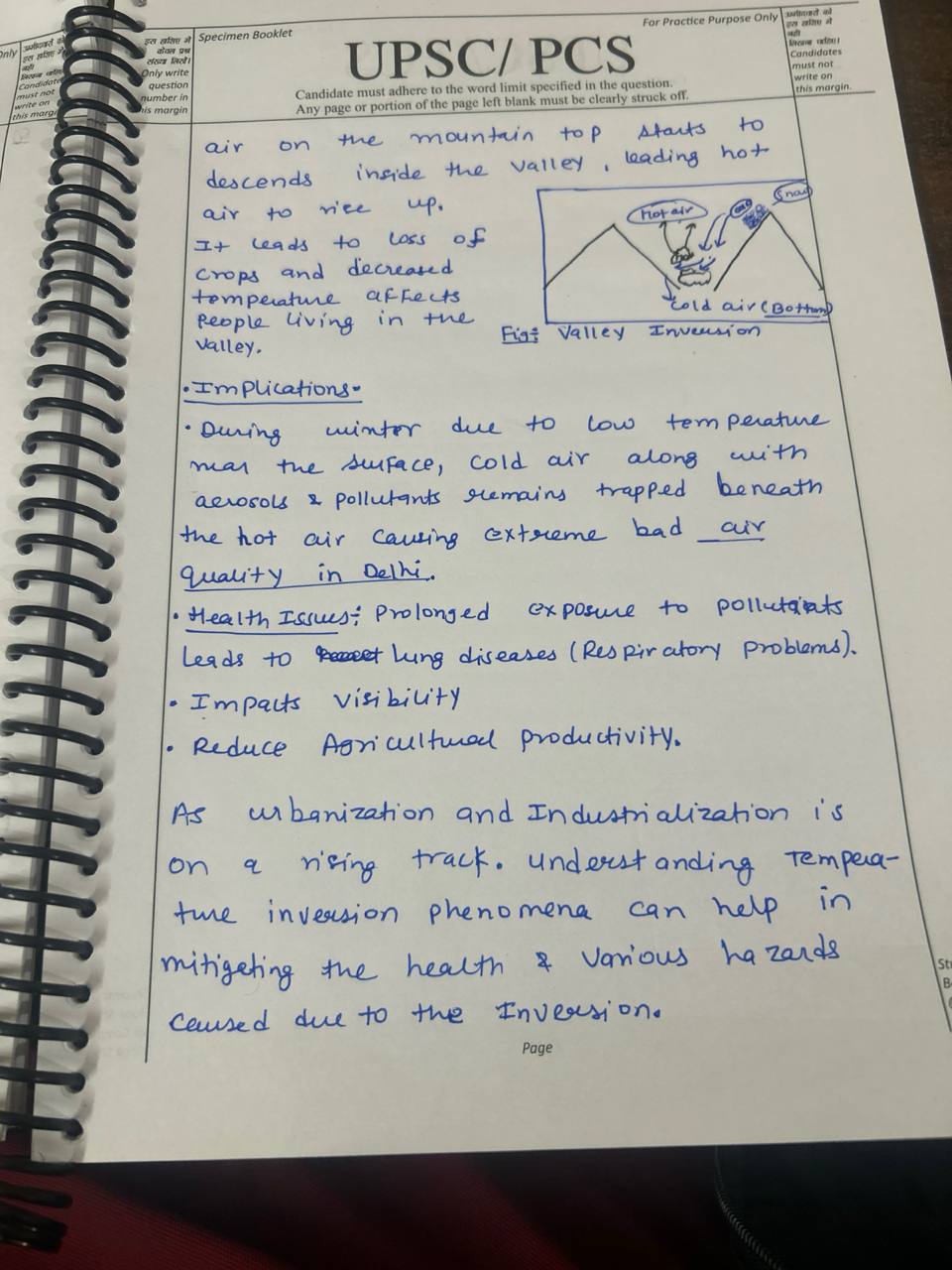World Geography
Share
307 Followers
21 Answers
704 Questions
Resources & Suggestions
Mains Answer Writing Latest Articles
On: April 18, 2025
Daily Answer Writing Practice Questions (18 April 2025)
Do you agree with the claim that indecision and risk aversion are prevalent issues in Indian bureaucracy? Support your answer with logical reasoning. (150 words) ऐसा कहा जाता है कि भारतीय नौकरशाही में अनिर्णय और जोखिम से बचने की प्रवृत्ति ...
On: April 18, 2025
Comments:
0
Strengthening India’s Cyber Defence
Rising Threats Digital Era Challenges: 2024 marks a significant rise in digital threats, particularly from AI and cyberattacks. Key Issues: Disinformation campaigns. Cyber fraud affecting daily life. Current Major Cyber Threats Ransomware Rampage: Over 48,000 instances of WannaCry ransomware detected ...
On: April 18, 2025
Comments:
0
भारत की साइबर सुरक्षा
बढ़ते खतरे कृत्रिम बुद्धिमत्ता (AI) और साइबर हमले: 2024 में AI और साइबर हमलों के खतरे में वृद्धि। महत्वपूर्ण अवसंरचना पर हमले: डिजिटल हमलों और दुष्प्रचार अभियानों की संभावना बढ़ी है। प्रमुख साइबर खतरें रैनसमवेयर का प्रकोप: 48,000 से अधिक ...

Overcoming Barriers to Online Education in Rural Areas
1. Securing Connectivity Infrastructure Broadband penetration-There is need for extend broadband to rural areas. This can be done by: Fiber optic cables: Fiber optic networks to be laid down to provide access to high speed internet connection to all the remote areas in the country. Public Wi-Fi hubsRead more
1. Securing Connectivity Infrastructure
Broadband penetration-There is need for extend broadband to rural areas. This can be done by:
Fiber optic cables: Fiber optic networks to be laid down to provide access to high speed internet connection to all the remote areas in the country.
Public Wi-Fi hubs: Setting up nodes of public internet accessibility in churches, schools, libraries and other public places so as to enable students be connected to the internet.
2. Enhancing Technology Access
These will include: A list of subsidized devices for the low-income families residing in rural regions include laptops, tablets and Ericsson smartphones that are sold at subsidized costs while the cheap data plans include the school data.
This can be information literacy involving computer literacy and learning resources; online learning resources; and online learning mediums.
These are community based learning centers equipped with computers and internet connection whereby the student would use to access material online, with the support of the teacher and volunteers.
-One Laptop Per Child (OLPC) Initiatives: Furthering of the examples such as OLPC, where students are given laptops and education software, and many others.
3. Optimisation of the solution of online learning
Development of Offline learning materials: Besides hard copies, learning material in CDs and DVDs; offline mode of learning web-sites so that in case internet is not working properly, the students have this option.
Use Community Radio and Television: How you will reach the target community is by using the radio and television stations to pass information and give guidelines on how to embark on online lessons.
Teacher Training on Online Pedagogy: Assisting teachers with how to teach online classes which include understanding and implementing online platforms, development of online effective content and participating in the management of online students.
4. Students – equity and teacher-student relations
-Equitable Access: Socio-economic differences; they include: No one is disadvantaged as all students can access the e-learning resources and support.
-Gender and Disability: Service learning to address the needs of girls and learners with disability in issues of access and use of online learning.
5. Government Initiatives and Partnerships
Public-Private Partnerships: An initiative of forging linkages with private sector partner companies for the provisioning of affordable internet access and technology solution for rural communities.
-Government Subsidies and Incentives: to incentivize all telecom companies and Internet Service Providers (ISPs) to take their services to rural areas.
See lessOvercoming Barriers to Online Education in Rural Areas
1. Securing Connectivity Infrastructure Broadband penetration-There is need for extend broadband to rural areas. This can be done by: Fiber optic cables: Fiber optic networks to be laid down to provide access to high speed internet connection to all the remote areas in the country. Public Wi-Fi hubsRead more
1. Securing Connectivity Infrastructure
Broadband penetration-There is need for extend broadband to rural areas. This can be done by:
Fiber optic cables: Fiber optic networks to be laid down to provide access to high speed internet connection to all the remote areas in the country.
Public Wi-Fi hubs: Setting up nodes of public internet accessibility in churches, schools, libraries and other public places so as to enable students be connected to the internet.
2. Enhancing Technology Access
These will include: A list of subsidized devices for the low-income families residing in rural regions include laptops, tablets and Ericsson smartphones that are sold at subsidized costs while the cheap data plans include the school data.
This can be information literacy involving computer literacy and learning resources; online learning resources; and online learning mediums.
These are community based learning centers equipped with computers and internet connection whereby the student would use to access material online, with the support of the teacher and volunteers.
-One Laptop Per Child (OLPC) Initiatives: Furthering of the examples such as OLPC, where students are given laptops and education software, and many others.
3. Optimisation of the solution of online learning
Development of Offline learning materials: Besides hard copies, learning material in CDs and DVDs; offline mode of learning web-sites so that in case internet is not working properly, the students have this option.
Use Community Radio and Television: How you will reach the target community is by using the radio and television stations to pass information and give guidelines on how to embark on online lessons.
Teacher Training on Online Pedagogy: Assisting teachers with how to teach online classes which include understanding and implementing online platforms, development of online effective content and participating in the management of online students.
4. Students – equity and teacher-student relations
-Equitable Access: Socio-economic differences; they include: No one is disadvantaged as all students can access the e-learning resources and support.
-Gender and Disability: Service learning to address the needs of girls and learners with disability in issues of access and use of online learning.
5. Government Initiatives and Partnerships
Public-Private Partnerships: An initiative of forging linkages with private sector partner companies for the provisioning of affordable internet access and technology solution for rural communities.
-Government Subsidies and Incentives: to incentivize all telecom companies and Internet Service Providers (ISPs) to take their services to rural areas.
See lessWhat are glacial lakes? Explain the factors contributing to glacial lake outburst floods. (200 words)
Glacial lakes are formed when glaciers melt, creating pools of water in natural basins or behind barriers such as moraines, ice, or rocks. These lakes are usually found at high altitudes and are highly sensitive to climate changes, making them fragile and vulnerable parts of the environment. What CaRead more
Glacial lakes are formed when glaciers melt, creating pools of water in natural basins or behind barriers such as moraines, ice, or rocks. These lakes are usually found at high altitudes and are highly sensitive to climate changes, making them fragile and vulnerable parts of the environment.
What Causes Glacial Lake Outburst Floods (GLOFs)?
Several factors contribute to these events:
Impacts of GLOFs
1. Environmental Impacts:
2. Social Impacts:
3. Economic Impacts:
4. Long-term Consequences:
Conclusion:
Glacial Lake Outburst Floods pose serious environmental, social, and economic risks, especially in mountainous regions such as the Himalayas, Andes, and Alps. To reduce their impact, measures such as monitoring glacial lakes and establishing early warning systems, are essential to protect vulnerable communities.
See lessWhat are air masses? Discuss the various types of air masses and their significance. (200 words)


See lessWhat are the favorable conditions for the formation of coral reefs? Discuss the factors contributing to their decline. (200 words)


See lessWhat are the key factors that contribute to the formation of tsunamis? Discuss the measures India has implemented to reduce their impact. (200 words)



See lessWhat is temperature inversion? Discuss its different types and their implications. (200 words)



See lessInternational Development and Developing Nations
Getting governance-Governance development assistance can enhance governance systems and the institution efficiency and accountability in fighting corruption. Human Capital-Aid can help develop human capital by enhancing availability of quality education, health care and also enhance available resourRead more
Getting governance-Governance development assistance can enhance governance systems and the institution efficiency and accountability in fighting corruption.
Human Capital-Aid can help develop human capital by enhancing availability of quality education, health care and also enhance available resource for human safety nets.
Promoting inclusive growth-Employment creation through development assistances would promote business and cultivate sustained economic structures on the public.
Equality and fairness purposes of aid could deal with Gender, Ethnic, or any other inequalities within the society, in a way that resources channeled to such a society would be equitably distributed among all factions of that society.
Strengthening Coping capacity- development assistance may help prepare countries for climate change, natural disasters and other hazards.
Promoting or Supporting Sustainable Development-Such aid can promote conservation of the environment and sustainability of natural recourses for the future.
See less"Age Structure and Fertility Rates in Developing Countries"
Age Structure and Fertility Rates: Managing Demographic Change in Developing Nations Of all the demography characteristics, age and fertility influencing population development in developing nations are crucial factors. Age Structure: Youth Bulge: They are a resource that if given a large populationRead more
Age Structure and Fertility Rates: Managing Demographic Change in Developing Nations
Of all the demography characteristics, age and fertility influencing population development in developing nations are crucial factors.
Age Structure:
Youth Bulge: They are a resource that if given a large population of young people can cause fast overpopulation therefore a lot of demands on the available resources and development infrastructure.
-Aging Population: Few births you have correspond with higher level of dependency of the aged as people age thus implying a higher number of the aged and those who will be being supported by working population.
Demographic Dividend: The time when a majority of the population is in the working population. In such a case economic growth and development is possible if there is investment in education, health and employment.
Fertility Rates:
High Fertility Rates: Problem of providing basic needs such education, health and employment in areas of rapid population growth due to high fertility rates will arise.
One could slow the rate of growth of the population and leave it in its old age. It has advantages and disadvantages – on one hand less resources are being used, on the other hand – economic issues may arise.
It is influenced by fertility rate meaning it is associated with several effects that a country can go through on the social, economic and environmental front. For instance, high fertility population that happens within the youthful population may find it difficult to facilitate education and health facility while the aged people require much investment on the social security and health services.
See lessDiscuss two widely accepted theories of origin of the earth. Elucidate the position of all planets within the solar system and write the important facts of the earth. [ UPSC PYQ 2024 ]
The two widely accepted theories of origin of the earth are: Nebular hypothesis The earth formed from a cloud of gas and dust, which collapsed under gravity, with the sun forming as it's center. Planetesimal hypotheses The earth formed from the accumulation of small Rocky bodies called planetesimal,Read more
The two widely accepted theories of origin of the earth are:
Nebular hypothesis
The earth formed from a cloud of gas and dust, which collapsed under gravity, with the sun forming as it’s center.
Planetesimal hypotheses
The earth formed from the accumulation of small Rocky bodies called planetesimal, which merged to form larger bodies, eventually becoming the earth.
Position of earth within the solar system
Mercury
Venus
Earth
Mars
Jupiter
Saturn
Uranus
Neptune
The earth is the third planet the sun
See less